Voltages
European electrical power is 230 VAC, about twice the voltage we use in the U.S. Many modern electronic devices have a power supply that accepts a wide range of voltage and can be used anywhere. Some older ones can only accept the lower U.S. voltages and cannot be used by themselves in Europe on 230V.
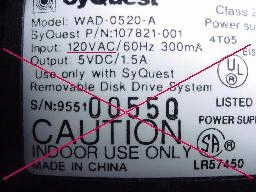 |
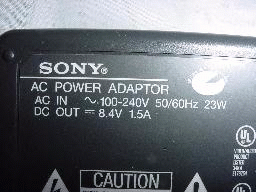 |
Note that it says "input: 120VAC". It will not work in Europe without a voltage converter. |
Note that it says "AC IN ~100-240V". The "~" means alternating current, AC. It will work in Europe. |
Outlets
An outlet is technically defined as anywhere that the building wiring is accessible from outside the wall. This could be a lighting fixture, a wall switch, or a place, called a receptacle, where you can plug in any device.
| The receptacles in modern buildings look like this. Note: one slot is wider that the other one to accept a polarized plug and there is a hole under the slots to take a ground pin. |
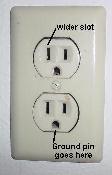 |
U.S. Plugs
There are three types of plugs used in the U.S.
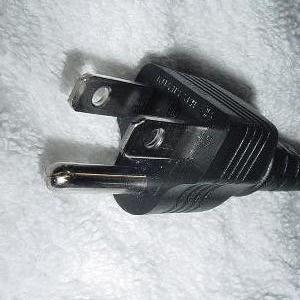 | 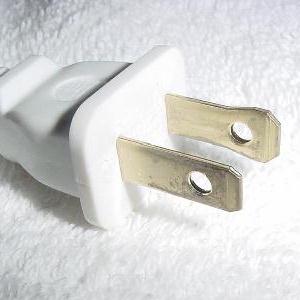 |  |
| This is a grounded plug. Note the round, ground pin below the blades. One blade might be wider, or they might both be the same width. | This is a polarized plug. Note that the far blade is wider than the other blade. It only fits in a polarized receptacle one way. | This is a non-polarized plug. Both blades are the same width. It is used for "double insulated" devices. |
In Europe, each country has its own style of wall receptacle, but all receptacles on the continent accept a plug with two round pins, 4.0 - 4.8 mm in diameter, 19mm apart (on centers). The grounding methods, however, differ from country to country. Every country has a different style of grounding plug, but the ungrounded "Europlug", which has two 4.0mm diameter pins, fits into any receptacle in Europe. Because it is not grounded, it is limited by law to devices drawing a maximum of 2.5 amperes.
Plug adapters
Plug adaptors have the Europlug two pins on the male end and slots for a U.S. two blade plug on the female end. Electronic chargers draw less than 2.5 amps (575 Watts) and can be used with a EuropPlug; heating devices, like hair dryers and curling irons draw more, so, unless they have CE certification, technically, they cannot legally be used.
 | This is what a symbol of CE certification looks like |
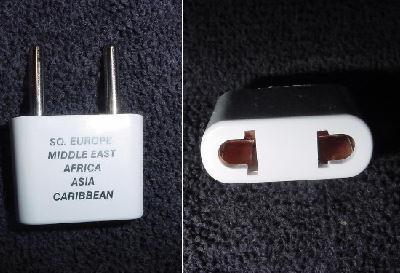 | 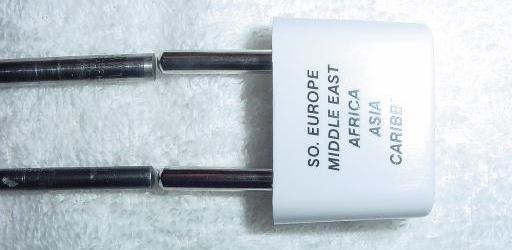 |
| <-- Above are two views of the Europlug. Note that the female end will accept either another Europlug or a polarized U.S. plug - with one blade wider (note: the lefthand slot is wider). I bought this plug at ACE Hardware for less than $5. | In case you are not sure if you have the right adapter, compare the pins to drills. The pins on a true Europlug will be the same diameter as a 5/32" drill (bottom). The top drill is 3/16" (4.8mm). That's the size of the No. adapter. Those pins are too big. |
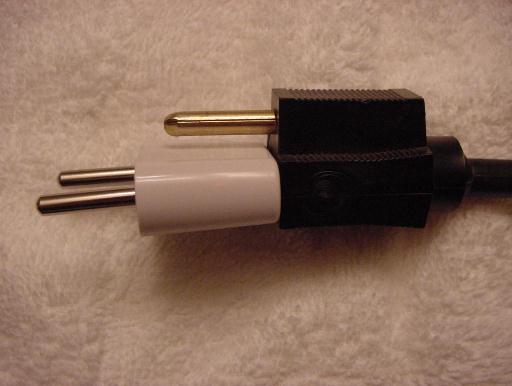 | 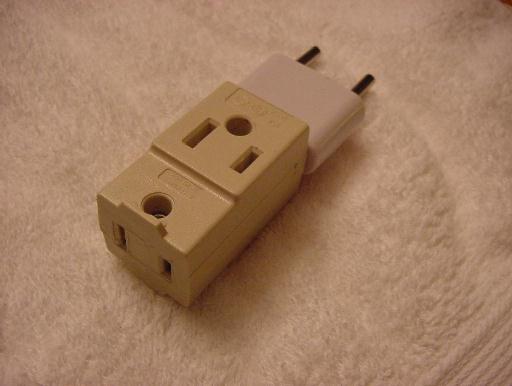 |
| Occasionally, you might have a device with a grounded plug. Above shows the Eplug with an American grounded plug. Note how the ground pin of the American plug clears the Eplug. | This is how I adapted my Europlug to accept more than one power supply using a standard U.S. 3-way adapter. After leaving my first Europlug in the wall in Bad Herrenalb, I now tape it to the 3-way adapter. |
non-grounded adapter | (shown plugged into 3way) |
|---|---|
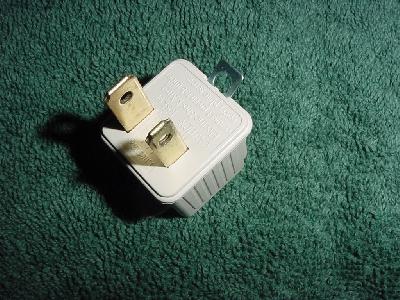 |  |
Converters
There are devices made to change the 230V in Europe to 120V for U.S. devices. They come in two types.
- Electronic converters "chop" the top off the sine curve so that the average is the same as 120V power, but the the wave form is not right. This works OK for heating devices and small motors, but could damage an electronic device or its adaptor. Electronic converters work up to approximately 1600W.
- Transformers: for electronic devices (computer and camera power supplies, 50W or less), a small transformer is used. This produces a perfect sine wave and is thus acceptable for electronic devices and their chargers. Don't use one of these with high wattage devices like hair dryers!
To learn even more about electrical plugs and receptacles worldwide, click here.